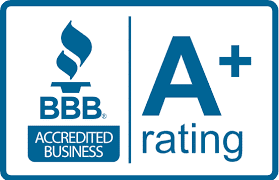Siding Repairs: How to Avoid Replacements With Professional Repairs
Siding shields homes from harsh weather, moisture, and other external factors while enhancing curb appeal. Over time, damage such as cracks, warping, or discoloration can affect its performance and appearance. Addressing these issues through professional siding repairs prevents further deterioration and avoids the expense of full replacements. Expert repairs also help maintain a home’s exterior, ensuring it remains visually appealing and structurally sound for years. Situations When Professional Siding Repair is a Better Option Damaged siding affects a home’s durability, energy efficiency, and curb appeal. Small cracks, minor warping, or isolated damage may not require a full replacement, but ignoring these issues can lead to costly repairs. Professional siding repair addresses specific concerns without the expense of an entire replacement. Identifying the right repair time helps maintain the structure’s integrity while extending the siding’s lifespan. Minor Cracks and Small Holes Small cracks and holes may seem insignificant but they allow moisture to seep behind the siding. Trapped moisture leads to mold, mildew, and structural damage over time. A professional can seal these gaps using the right materials, preventing water infiltration. Repairing minor damage preserves the siding’s protective function and prevents further deterioration. Addressing these issues earlier reduces the risk of widespread problems. Localized Warping or Buckling Warped or buckled siding sections often result from excessive heat exposure or improper installation. When the issue affects only a small area, repairs offer a cost-effective solution. Professionals can replace and secure the damaged sections properly to prevent future movement. Repairing localized warping restores the siding’s appearance and maintains its ability to protect against weather elements. Immediate action prevents surrounding panels from becoming compromised. Loose or Missing Panels Harsh weather conditions, improper installation, or aging materials can cause siding panels to loosen or fall off. Gaps expose the underlying structure to moisture, pests, and temperature fluctuations. A professional can reattach or replace the affected panels, ensuring a secure fit. Properly secured siding maintains insulation and prevents additional damage. Repairs at the right time help avoid extensive structural issues. Isolated Water Damage Water stains or slight discoloration on the siding indicate moisture-related problems. Prolonged exposure to water weakens materials, increasing the risk of rot and mold growth. When damage is confined to a specific area, a professional repair can replace the affected section without removing all the siding. Addressing water damage earlier prevents more extensive deterioration. A quick repair keeps the structure intact and avoids costly future replacements. Fading or Chipping Paint Peeling or fading paint affects the siding’s appearance and exposes materials to the elements. Sun exposure, moisture, and fluctuating temperatures accelerate wear, making the surface vulnerable to damage. A professional can apply fresh paint or protective coatings to restore the siding’s durability. Timely repairs prevent further degradation and maintain the home’s visual appeal. Protecting the surface prolongs the siding’s lifespan and prevents early replacement. Mold or Mildew Growth Dark streaks, green patches, or musty odors on the siding indicate mold or mildew growth. Excess moisture and poor ventilation create the perfect conditions for fungal buildup. Cleaning alone may not resolve the issue if mold has penetrated the material. A professional can assess the damage, remove affected areas, and apply protective treatments to prevent regrowth. Proper repairs keep siding in good condition and protect indoor air quality. Increased Energy Bills Damaged siding affects insulation, allowing air leaks that compromise indoor temperature control. Higher heating and cooling costs often indicate an issue with the home’s exterior. A professional can repair gaps, cracks, or loose panels to restore insulation efficiency. Repairing siding helps maintain a consistent indoor temperature and reduces energy expenses. Well-maintained siding contributes to better home comfort and lower utility costs. Pest Infestation Signs Small holes, gaps, or nesting materials near the siding suggest pest activity. Insects and rodents use damaged siding as an entry point to access a home’s interior. A professional can inspect the siding, seal openings, and repair affected sections to prevent further intrusion. Prompt action keeps pests from causing additional structural damage. Well-repaired siding acts as a barrier against unwanted infestations. How Professional Siding Repairs Prevent Costly Siding Replacement Simple siding repairs address damage early and prevent issues from escalating into expensive replacements. Cracks, gaps, and other minor problems can weaken siding if ignored, but timely interventions can extend its lifespan. By resolving these issues promptly, homeowners maintain their siding’s functionality and appearance without needing a replacement. Preventing Moisture Infiltration Small cracks or gaps in the siding allow water to seep in, leading to rot and mold over time. Repairs seal these openings, keeping moisture out and protecting the structure beneath. Fixing damaged sections earlier prevents widespread water damage requiring a complete replacement. Regular maintenance also ensures the siding remains a strong barrier against weather-related risks. Addressing Minor Damage Before it Worsens Minor cracks or dents in siding may seem insignificant but can quickly grow under harsh weather conditions. Repairs restore these areas, stopping deterioration and maintaining the siding’s integrity. Ignoring minor issues can result in large-scale damage that demands complete replacement. Regular inspections and repairs keep the siding in top condition, avoiding costly fixes later. Extending the Lifespan of Existing Siding Siding naturally ages, but repairs can prolong its usability and appearance. Fixing issues like peeling paint or warping panels revitalizes aging siding and delays replacement. Maintaining existing siding saves money and reduces waste while keeping the home’s exterior visually appealing. Professional care ensures long-term durability and functionality. Improving Energy Efficiency Damaged siding often allows air to escape, causing higher energy bills and reduced insulation. Repairs seal gaps and cracks, improving energy efficiency and lowering utility costs. Well-maintained siding creates a more comfortable indoor environment and reduces the strain on HVAC systems. Proper repairs eliminate the need for replacement by preserving the siding’s insulating properties. Regular Maintenance for Long-Term Durability Routine siding inspections identify early signs of wear before they become serious. Cleaning, sealing, and minor repairs prevent extensive damage requiring a full replacement. A professional assesses potential issues and applies preventative treatments to enhance siding longevity. Consistent







